Weldability of metals & Types of inspection methods | धातुओं की वेल्डेबिलिटी और निरीक्षण विधियों के प्रकार
⬇ नीचे दिये गये START QUIZ पर क्लिक करें ⬇
Q1. What is the name of the tool shown in figure? / चित्र में दिखाए गए टूल का नाम क्या है?

Q2. What is the necessity of allowing elements? / तत्वों को अनुमति देने की आवश्यकता क्या है?
Q3. What is the percentage of carbon in medium carbon steel? / मध्यम कार्बन स्टील में कार्बन का प्रतिशत कितना होता है?
Q4. How many types of cast iron are there? / कच्चा लोहा कितने प्रकार का होता है?
Q5. What is the name of the test shown in figure? / चित्र में दिखाए गए परीक्षण का नाम क्या है?

Q6. What is the use of metallic arc cutting and gauging? / मेटालिक आर्क कटिंग और गेजिंग का क्या उपयोग है?
Q7. What Non-destructive test is done using coloured dye and fluorescent liquid to find minute cracks? / मिनट क्रैक को खोजने के लिए रंगीन डाई और फ्लोरोसेंट तरल का उपयोग करके क्या कौनसा नॉन डिस्ट्रक्टि टेस्ट किया जाता है?
Q8. Which one of the flux is used in brass welding? / पीतल वेल्डिंग में किस फ्लक्स का उपयोग किया जाता है?
Q9. Which method of test is conducted to know the tensile strength and ductility? / तन्य शक्ति और लचीलापन जानने के लिए परीक्षण की कौन सी विधि आयोजित की जाती है?
Q10. What is the pre-heating temperature of cast iron? / कच्चा लोहा का पूर्व-ताप तापमान क्या है?
Q11. What is the type of arc cutting shown in figure? / चित्र में दिखाए गए आर्क कटिंग का प्रकार क्या है?
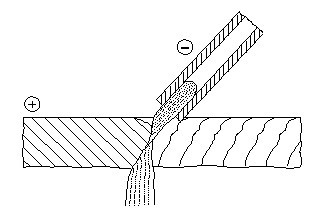
Q12. How to determine, if leaks are present in welded pressure vessels? / यह कैसे निर्धारित किया जाए कि वेल्डेड दबाव वाहिकाओं में रिसाव मौजूद है?
Q13. What is the name of the tool shown in figure? / चित्र में दिखाए गए टूल का नाम क्या है?

Q14. What are the costs involved in welding job? / वेल्डिंग कार्य में शामिल लागतें क्या हैं?
Q15. Which type of test is generally not used on the final product? / अंतिम उत्पाद पर किस प्रकार का परीक्षण आमतौर पर उपयोग नहीं किया जाता है?
Q16. What is the name of the part marked ʹXʹ shown in figure? / चित्र में दिखाए गए ʹXʹ अंकित भाग का नाम क्या है?

Q17. Which one is the properties of cast iron? / कच्चे लोहे का कौन सा गुण है?
Q18. How the welding cost is calculated? / वेल्डिंग लागत की गणना कैसे की जाती है?
Q19. What is the melting point of copper? / तांबे का गलनांक कितना होता है?
Q20. What is the melting point of zinc? / जिंक का गलनांक कितना होता है?
Q21. What type of preheating is done only at the portion of weld? / किस प्रकार की प्रीहीटिंग केवल वेल्ड के हिस्से पर की जाती है?
Q22. When does the defect of gouging on cutting face takes place? / कटिंग फेस को काटने पर उसमे गोजिंग का दोष कब लगता है?
Q23. What is the NDT method using sound as a source? / स्रोत के रूप में ध्वनि का उपयोग करते हुए NDT विधि क्या है?
Q24. Which stage the root gap is set in welding process? | वेल्डिंग प्रक्रिया में रूट गैप किस चरण में निर्धारित किया जाता है?
Q25. Which type of stainless steel is weldable? / किस प्रकार का स्टेनलेस स्टील वेल्ड करने योग्य है?
Q26. How many types of preheating are there? / प्रीहीटिंग कितने प्रकार की होती है?
Q27. Which metal in welding process is subjected to “Weld decay” defect? / वेल्डिंग प्रक्रिया में किस धातु को ʺवेल्ड क्षयʺ दोष के अधीन किया जाता है?
Q28. What is the main reason, that aluminium is difficult to weld? / मुख्य कारण क्या है, कि एल्यूमीनियम को वेल्ड करना मुश्किल है?
Q29. Which type of steel is suitable for welding? / वेल्डिंग के लिए किस प्रकार का स्टील उपयुक्त है?
Q30. Which is a non destructive test? / नॉन डिस्ट्रक्टिव टेस्ट कौन सा है?
Q31. Which one is the properties of aluminium? / एल्युमिनियम का कौन सा गुण है?
Q32. Which one is controlled distortion in copper welding? / कॉपर वेल्डिंग में कौन सी विकृति नियंत्रित होती है?
Q33. What is the test in which the weld quality is tested without destroying the job? / वह कौन सी टेस्ट है जिसमें जॉब को नष्ट किए बिना वेल्ड गुणवत्ता का परीक्षण किया जाता है?
Q34. How is the scale and oxide removed from stainless steel weld? / स्टेनलेस स्टील वेल्ड से स्केल और ऑक्साइड को कैसे हटाया जाता है?
Q35. What is the reason for lack of fluidity in molten metal in braze welding? / ब्रेज़ वेल्डिंग में पिघली हुई धातु में तरलता की कमी का क्या कारण है?
Q36. What is the name of part marked ʹXʹ shown in figure? / आकृति में दर्शाए गए ʹXʹ चिन्हित भाग का नाम क्या है?
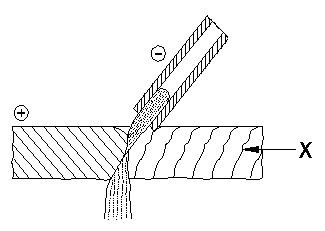
Q37. How many methods of destructive test? / विनाशकारी परीक्षण की कितनी विधियाँ?
Q38. What is mean by preheating? / प्रीहीटिंग का मतलब क्या है?
Q39. What flux is used in welding brass? / पीतल की वेल्डिंग में किस प्रवाह का उपयोग किया जाता है?
Q40. Which are the common alloying element of brass? / पीतल के आम मिश्र धातु तत्व कौन से हैं?
Q41. Which flame is suitable for low carbon steel in OAW? / OAW में निम्न कार्बन स्टील के लिए कौन सी लौ उपयुक्त है?
Q42. Which type of cast iron is soft? / किस प्रकार का कास्ट आयरन नरम होता है?
Q43. What is the name marked ʹXʹ shown in figure? / चित्र में दर्शाए गए ʹXʹ नाम से कौन सा नाम दर्शाया गया है?
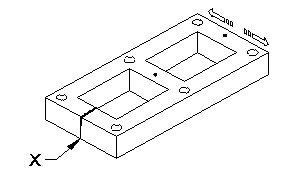
Q44. What are the alloying elements are found in brass? / पीतल में कौन से मिश्रधातु तत्व पाए जाते हैं?
Q45. How the construction of a nozzle for gouging is identified? / गोइंग के लिए एक नोजल के निर्माण की पहचान कैसे की जाती है?
Q46. What is the type of arc cutting shown in figure? / चित्र में दिखाए गए आर्क कटिंग का प्रकार क्या है?
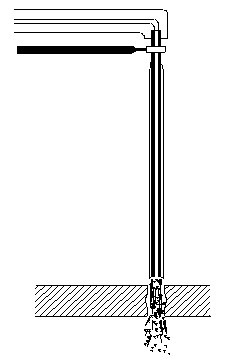
Q47. Which type of electrodes are used in oxy - arc cutting? / ऑक्सी-आर्क कटिंग में किस प्रकार के इलेक्ट्रोड का उपयोग किया जाता है?
Q48. What type of gas flame is used to weld 2mm mild steel by brazing method? / ब्रेज़िंग विधि द्वारा 2 mm हल्के स्टील को वेल्ड करने के लिए किस प्रकार की गैस की लौ का उपयोग किया जाता है?
Q49. Which flame is suitable for brass welding? / पीतल वेल्डिंग के लिए कौन सी लौ का उपयुक्त होती है?
Q50. What is the name of the part marked ʹXʹ shown in figure? / चित्र में दिखाए गए ʹXʹ अंकित भाग का नाम क्या है?
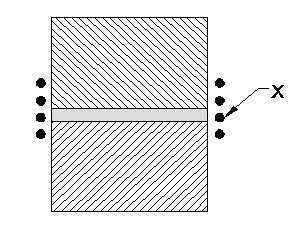
Welder 1st Year Module 5 Weldability of metals & Types of inspection methods
You got {{userScore}} out of {{maxScore}} correct
{{title}}
{{image}}
{{content}}